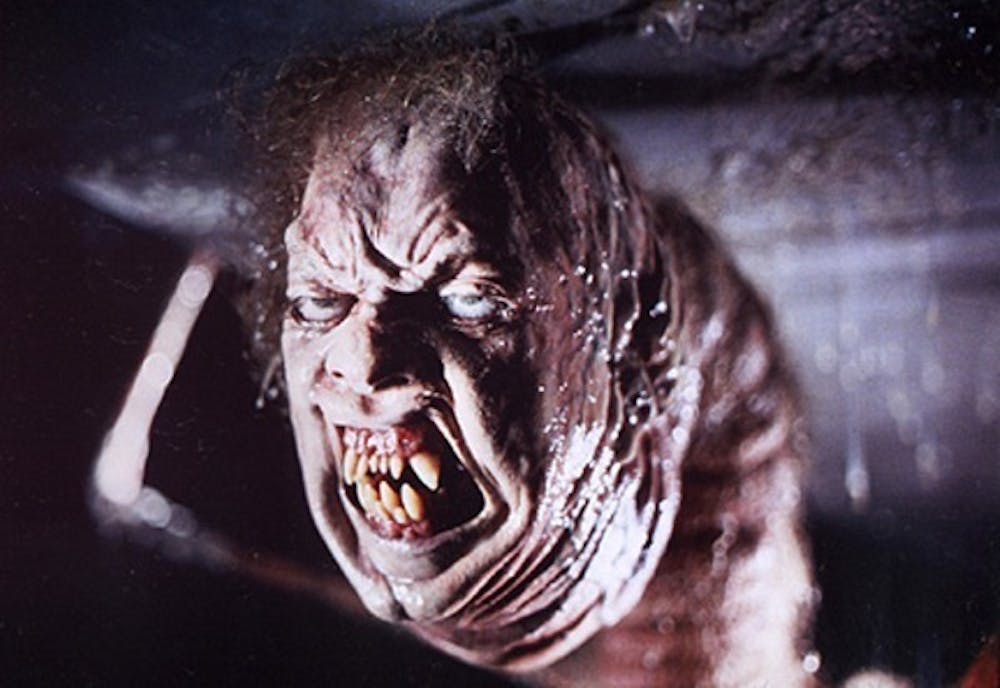I watch a ton of old, semi-obscure horror films. I really enjoy putting on a flick that doesn’t take itself seriously at all and, most importantly, features some totally gross and cool effects.
But all this watching makes me wonder. When was the last time I saw a truly impressive in-camera effect in a contemporary blockbuster film? It took me a while to come up with any examples. I realized then that my one true love, practical effects, are nearly gone from modern filmmaking.
Films today are filled to the brim with computer-generated imagery. “Avengers: Infinity War” included 2,700 shots, only 80 of which made it into the final cut without visual effects work. That’s only about 3% of the film that went untouched by post-production effects.
[Related: OPINION: A film industry underdog tale]
So what’s the problem with CGI? On the surface, nothing. It’s cheaper and quicker than painstakingly crafting animatronics and Claymation models. But relying so heavily on effects created weeks or months after filming severely reduces the impact of so many films.
In-camera effects are so much more impressive than CG ones. One of my favorite films of all time is 1982’s “The Thing.” The film features incredibly stunning practical effects that take my breath away every time I watch it. It’s nearly impossible to imagine the film without those effects.
Except I don’t have to imagine. There’s a 2011 remake of “The Thing” that utilizes nearly all CG effects, which many have criticized as being lackluster compared to the original. The sad thing is that the majority of the effects were created practically, but the studio decided to scrap them and replace them with computer-generated effects.
What’s truly insane to me is how poorly so many of these CG effects can age. 2011’s “The Thing” looks much worse in comparison to its predecessor made almost 30 years prior – which is weird, since technology has advanced so much in that time.
On a more personal note, practical effects are basically what made me interested in film. I’ve already mentioned “The Thing,” but it’s worth saying that those effects really sparked my love of the genre. A few other films with outstanding and inspiring effects include “An American Werewolf in London” and “Re-Animator.”
I realize I’ve talked a lot about horror because I’m me, but a big influence for me as a child was “Star Wars.” I was obsessed with the film as a kid, and the behind-the-scenes content I watched about the making of the groundbreaking effects impacted me heavily. If all of that was made on a computer after the fact, I’m not sure where I would be today.
[Related: OPINION: A potential hidden message in Oscar-nominated ‘Tár’]
So why do so many production companies still insist on CGI when practical effects look better? Probably because most visual effects (VFX) artists aren’t unionized.
Production companies practically have free reign over how these workers are treated. VFX artists on the latest “Ant-Man” film have alleged poor working conditions and a lack of resources. Companies are content with throwing all of those beautiful practical effects away and replacing them with hours of labor from exploited artists.
There can be a happy medium between CGI and practical effects. “The Mandalorian” utilized CG backgrounds, but also used a puppet for Grogu – which, in my opinion, is a huge part of his wide-spread appeal. 2017’s “The Shape of Water” used a practical suit for its amphibious love interest but augmented it with CGI to make his emotions really pop.
Even with so many advances in technology, practical effects remain a useful tool for filmmakers. They’re timeless and impressive. Some of the best movie moments were crafted with practical effects – think of the Tyrannosaurus rex in “Jurassic Park” or the lovable E.T. in his eponymous film. Practical effects are and will be some of the best parts of filmmaking – even if not every studio realizes it.
Danny William (they/them) is a freshman studying media. They admit their bias in this article with the confession that they’re trying to hypnotize you into watching “The Thing.”






